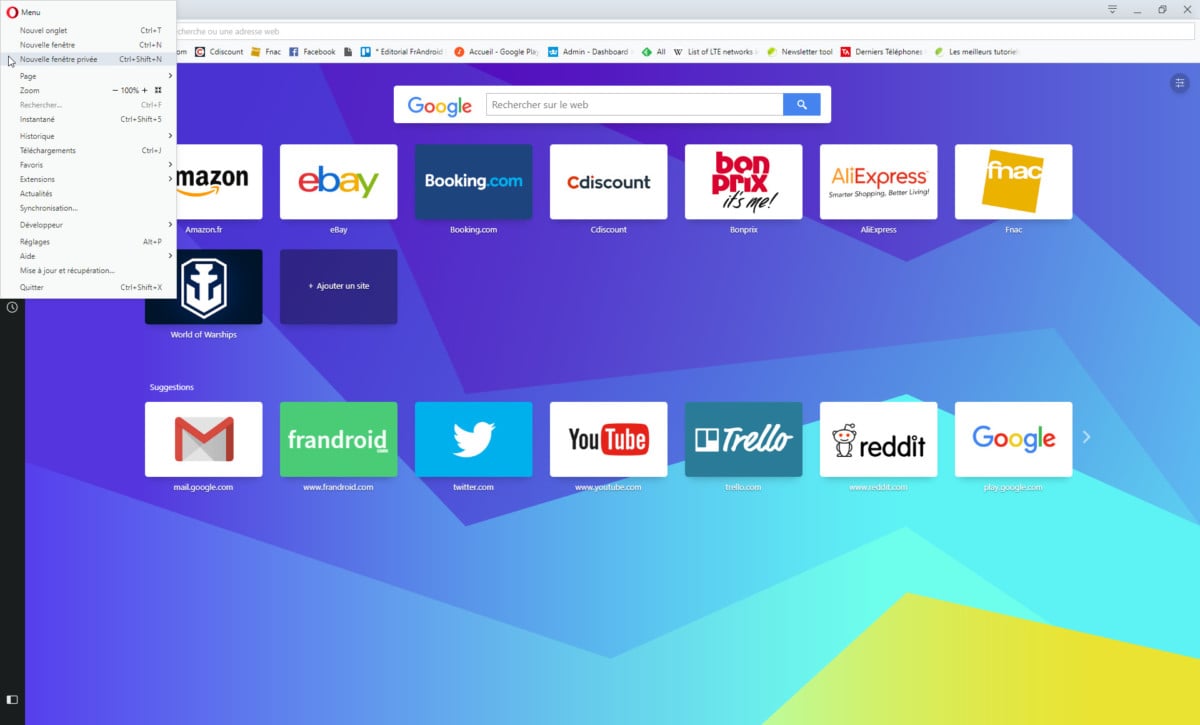We will see how to activate private browsing mode on your Chrome, Safari, Firefox or Opera browser to no longer leave traces on your PC or smartphone.
Private browsing mode on a browser allows you to surf the web without leaving any traces in your history. We won’t make an unsubtle joke on the subject, because casually, there are a good number of possible uses besides the one that comes to mind of the naughty people.
So, we will see in this tutorial for beginners how to switch to private browsing to enjoy the joys of the Internet in incognito mode.
How to put yourself in private browsing
Private browsing is still very easy to enable. And this, whatever browser you use.
Keyboard shortcuts
About the version desktop of each browser, you can each time use a keyboard shortcut to activate private browsing mode. Most of the time, you will just need to type “Ctrl+Shift+N” on Windows — or “Cmd+Shift+N” on macOS. Note, however, that you may encounter certain exceptions. So, on Mozilla Firefox, the shortcut to use is the following: “Ctrl+Shift+P”.
Enable private browsing on Google Chrome
On the computer version of Google Chrome, the procedure to switch to private browsing is extremely simple:
- Launch the Chrome browser
- Click on the three vertically aligned dots at the top right of the window
- Select the “New private browsing window” option


Enable private browsing on Safari, Firefox or Opera
For Safari, the approach is very similar. But to find the “New private window” option, you have to click on File at the top of the screen (note that Safari is no longer supported on Windows).

On Firefoxthe interface is significantly similar to that of Chrome since you have to click on the three stacked lines at the top right of the screen to find the “New private browsing window”.

As for Opera, the interface is quite different. Here, you must press the letter O present at the top left of the window to access private browsing via the “New private window” tab.

Private browsing on smartphones
On the Google Chrome mobile app, private browsing works the same way as on desktop. Pressing the three vertical dots at the top right of the interface will give you access to the list where the Private Browsing mode is located. On Mozilla Firefox, the operation is identical.


On Opera, you have to search a little more. When the browser app is open, tap the rectangle icon in the bottom bar. This gives access to the management of the different open tabs. From there, you must click on “Private” at the top right. Next, tap the “+” icon at the bottom center of the interface to launch an incognito tab.


If you are an iPhone and Safari user, you will find the option by tapping the two squares at the bottom right of your screen. Then tap on “Private” at the bottom right then on the “+” to benefit from private browsing.


Private browsing does not make you anonymous
Note, however, that while this does not leave a trace on your PC or smartphone, private browsing mode does not make you invisible on the internet. Not only can your internet service provider see all your traffic, but some large companies like Google can track part of your profile even without cookies.
If you want more security, it’s better to add a VPN to the equation.
